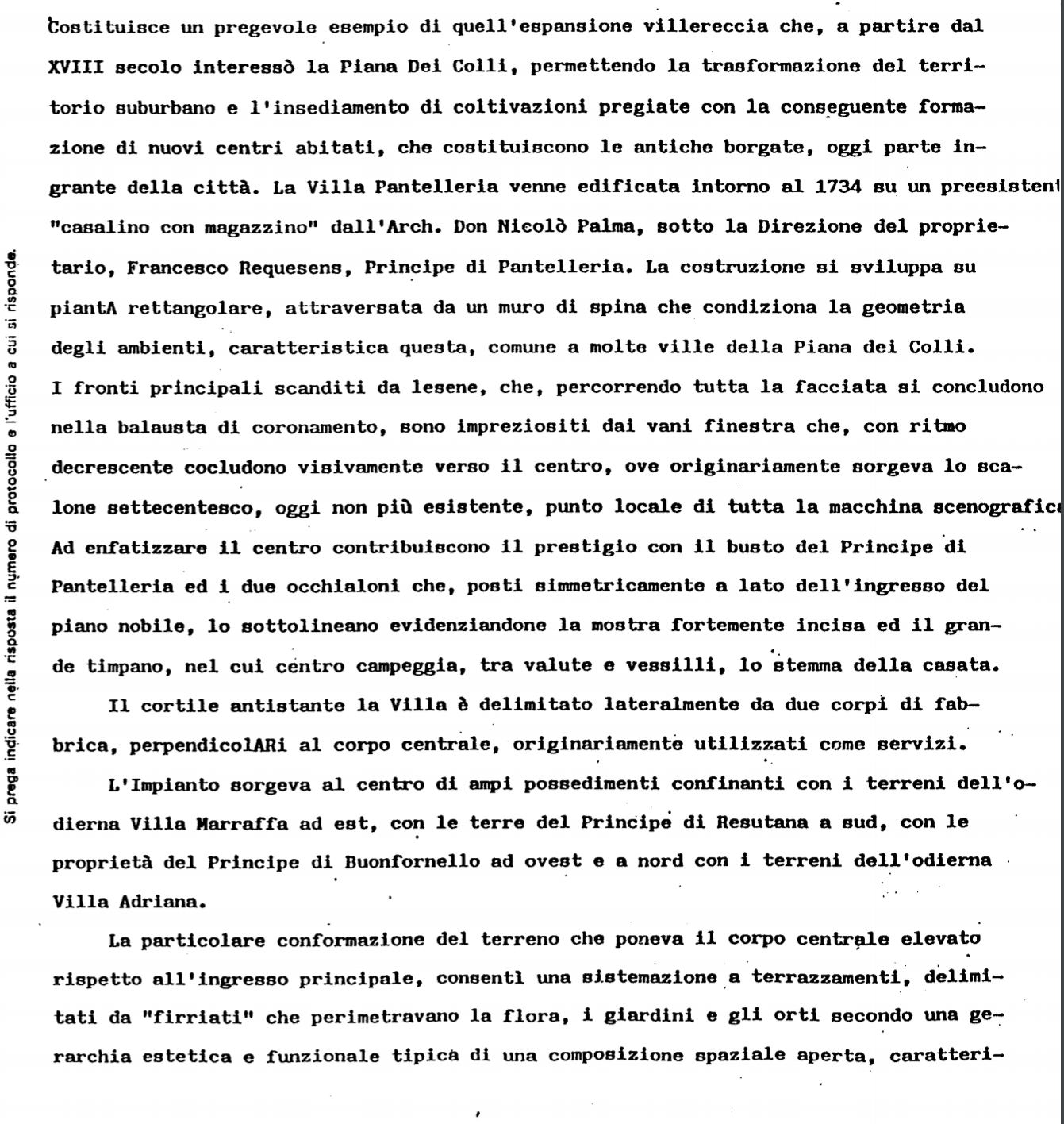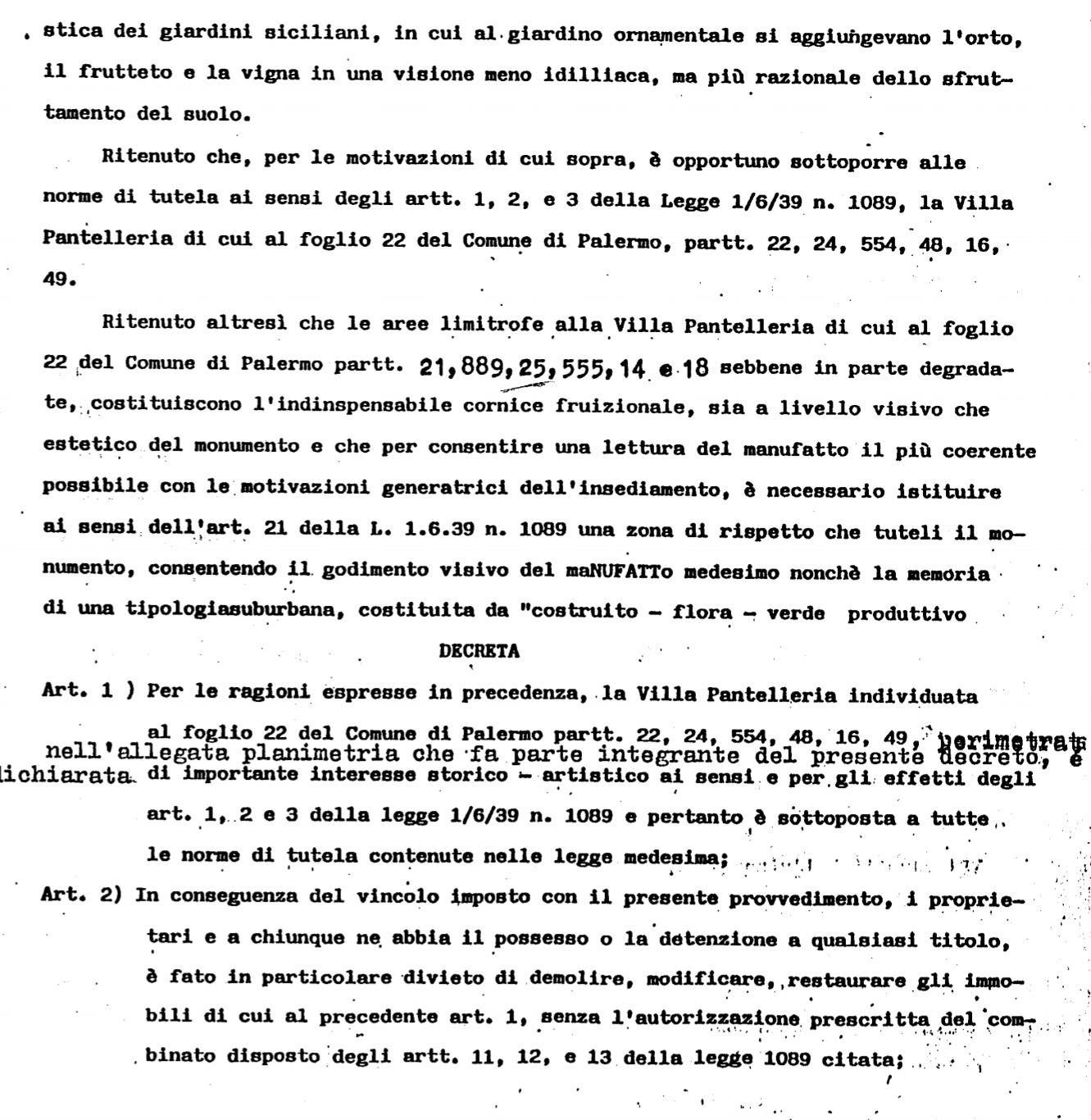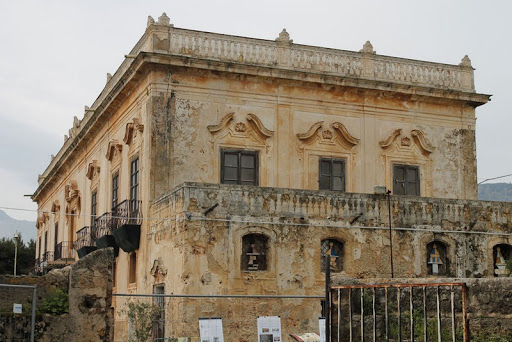Villa Pantelleria
Located in the Piana dei Colli, it was created as a noble summer residence. The two-storey building has a rectangular plan and a large garden, and was built in an area where a beam and a cottage originally stood.
History
Villa Pantelleria was built in 1734 by the will of Francesco Requesens,[3] member of the Pantelleria branch of the Requesens family.
Built as a summer residence, over time the villa passed from one owner to another, all nobles, who maintained its original use. It was only in 1977 that the villa changed use, being destined to carry out cultural and musical activities.[2]
In the 90s the villa was bought by a member of Cosa Nostra, and only in 2001 the judiciary ordered its seizure and entrusted it to the municipality of Palermo. After a period in which the villa lived in a state of neglect, the municipality entrusted its management to a cultural association, using the building as a venue for shows and cultural events.
In 2014 the villa was seized due to its precarious conditions (both part of the building and the garden walls were in fact at risk of collapse or already collapsed), but also due to the unauthorized building around the villa.
Despite the requests made to the municipality for the redevelopment of the park and the villa, this has not yet taken place due to lack of funds.
The park
Villa Pantelleria is surrounded by a large park (at least 20 m²) which is accessed by a road bordered by two pillars on which two lions are represented, the symbol of the Requesens family. In the park there are buildings originally intended for various services. The courtyard leading to the villa is crossed by various paths surrounded by greenery, which lead to an immense garden overlooked by the villa. (Text source: wikipedia)


Property bound under the law 1089/1939
download text:
| FROM n. 2104 of 07.08.1990 |
Card insertion: Ignazio Caloggero
Photo: web
Information contributions: Ignazio Caloggero Web,
Note: The populating of the files of the Heritage database proceeds in incremental phases: cataloging, georeferencing, insertion of information and images. The cultural property in question has been cataloged, georeferenced and the first information entered. In order to enrich the information content, further contributions are welcome, if you wish you can contribute through our area "Your Contributions"



